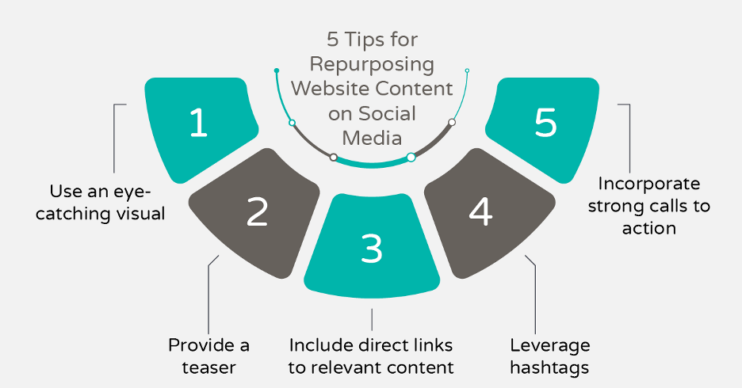3 Tips to Integrate Social Media with Your Nonprofit Website

In today’s digital-centric world, your organisation has plenty of choices when it comes to marketing your organization—from generating content on social media accounts like Instagram and Facebook to your nonprofit website. However, rather than treating these as disparate platforms, develop a cohesive marketing plan by integrating social media with your website.
Creating a bridge between your social media and nonprofit website can help set up two-way traffic between these two key channels, allowing you to increase your social media follower count and organic traffic on your site. As a result, you’ll be able to grow your supporter touchpoints and encourage them to stay tapped into your nonprofit around the clock.
In this guide, we’ll explore the top strategies to integrate social media with your website:
- Feature social media feeds on your website
- Share website pages to social media
- Leverage social sharing buttons
Consistent supporter engagement across multiple platforms can help your nonprofit maximize support, leading to more volunteers and donations down the line. Let’s jump into how you can realize these benefits and successfully connect your social media with your site.
Feature social media feeds on your nonprofit website
Some of the users who land on your website might be engaging with your cause for the very first time. As a result, they’ll be eager to learn about your organization’s mission and what this actually looks like in practice. What better way to show off your nonprofit’s impactful work than with your engaging social media content?
Embedding your social media feeds directly into your website allows site visitors to easily interact with your content as part of the web viewing experience, from video testimonials of your beneficiaries to pictures of your volunteers hard at work in the community. This powerful visual proof can help build trust and encourage new and returning supporters to further their involvement with your organization.
However, manually configuring your website to feature your social media feeds can involve hours of coding and feel overwhelming, especially if you’re a novice to web development. Rather than overburdening yourself and your team, Morweb recommends working with a comprehensive website builder with built-in social integrations.
This way, you can embed social media feeds into your content with just a few clicks, and they’ll automatically update whenever you post new content on social media. Your website will always look fresh as a result!
Whether you want to show off your Instagram feed on your homepage or embed a Twitter post into your next blog article, an intuitive website builder can make this process a breeze. Do your research to find the right solution for your goals and broader web design needs. For example, if you’re hoping to cut down design time, you might want to invest in a content management system (CMS) that uses drag-and-drop editing.
Repurpose website content on social media
Your nonprofit likely spends plenty of time creating high-value content on your website, from event landing pages to blog articles that overview your projects and progress. Rather than doubling your content creation time by also generating new posts for social media on a regular basis, you can repurpose content from your website on social media.
Not only will this save your team time, but it’ll also help you direct social media followers to your website. Here, supporters can learn more about different ways they can get involved, from signing petitions for your awareness campaign to donating to your upcoming fundraiser. Use these tips when repurposing website content on your social media:

- Use an eye-catching visual: Let’s say you’re promoting a new piece of blog content related to your animal welfare nonprofit’s adoption initiative. If you already have a featured image on this blog post, reuse the same one in your social media content. Alternatively, you can share a photo related to your website content that you already have, like a picture of your volunteers or the animals you’ve helped.
- Provide a teaser: Don’t give away everything about a given piece of website content in your social media caption! Provide a teaser or pull a quote directly from the link to pique interest and encourage supporters to navigate to the content for the full story.
- Include direct links to relevant content: To make navigating from your social media to your website content simple, add the mobile-friendly link to your social media bio or the caption itself. If your page has a longer URL structure, it can be helpful to shorten the link using free tools like Bitly or TinyURL.
- Leverage hashtags: Hashtags can help to expand your reach and get your social media content in front of new audiences (and therefore bring more traffic to your website). For instance, an environmental organization might use popular hashtags like #SaveThePlanet or #Recycle to bring more visibility to its social media posts.
- Incorporate strong calls to action: Contextualize your website link and provide a clear call to action to click on it. For example, if you’re sharing a link to your event landing page, you might write “Click to register now for our annual walkathon to tackle hunger!” This statement lets supporters know where the link will take them and creates a sense of urgency, increasing the likelihood of a high clickthrough rate.
Before you share links to your nonprofit website content on social media, make sure that your website is in good shape for visitors. This means it should be user-friendly, visually appealing, and easy to navigate. The right CMS will come with an array of built-in nonprofit website templates and widgets to take the guesswork out of web design and streamline revamping your digital presence.
Leverage social sharing buttons
Another way you can smoothly integrate your website with social media is by using social sharing buttons. These buttons let your supporters easily share any page to popular platforms like Instagram, Facebook, and LinkedIn with just a click.
For example, you might add social sharing buttons to the donation confirmation page on your website so supporters can share that they just donated to your organization. This social proof can help you bring in more donors and increase your visibility. You could also add sharing buttons to event landing pages so supporters can easily invite their friends and family members to register or donate.
With your website builder, you should also be able to design your social sharing buttons to match your unique branding and align with your overall site design. Make sure to use contrasting colors within your color scheme so these buttons will stand out from the page and be easily seen by supporters.
Social media and your nonprofit website are two of the most powerful tools at your disposal. Harness your full marketing potential by pairing your platforms together using these simple integration strategies. By investing in the right CMS, you can easily bridge the gap between your website and social media and turn increased touchpoints into conversions.


